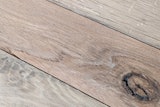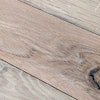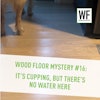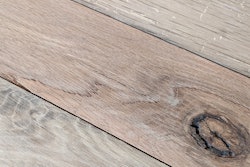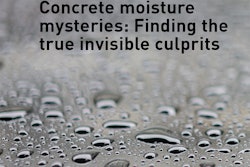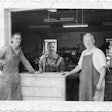The Problem
In July, I was called to look at 2,000 feet of solid ¾-by-3/5/7-inch oak flooring that had buckled.
The Procedure
The plank flooring had been installed over a "manufactured" floating subfloor system designed for use directly on concrete. Individual panels were 58-inch OSB 24-inch squares with tongue and groove edges and a rigid molded plastic overlay on the bottom face to allow the concrete to "breathe." The GC had already installed the system directly on the concrete and instructed the flooring contractor to staple a layer of ¼-inch underlayment to the exposed OSB, then install the plank flooring.
The Cause
There was no cupping or spaces between boards, and individual boards measured the exact manufactured width up to 1/64 inch over-width. The floor was buckled above the concrete by as much as 3 inches. Initially the floor swelled enough to push against the walls, and even after expansion was re-cut around the perimeter and sections of the flooring were removed, areas of the floor remained buckled. Moisture content (MC) of the oak flooring and OSB subfloor was 8.5 percent. There were no indications that excessive moisture had ever been present.
This was a classic example where conventional wisdom is misleading: We would normally look for excessive moisture, either from the concrete or environment, as the cause of buckling. When we cannot find any indications of excessive moisture, though, determining the cause becomes more challenging. I had to look at this unusual combination of subfloor and flooring to see if it might be inherently defective. A floating subfloor system must be strong enough to maintain its size and shape when it is exposed to normal interior equilibrium moisture conditions. When a floating subfloor is too flexible, it cannot resist the forces generated during normal seasonal swelling and shrinking. As the solid wood flooring swells at a rate greater than the engineered plywood/OSB, the assembly becomes distorted. For instance, during normal seasonal fluctuations of interior RH, we can expect a solid white oak board 24 inches wide to shrink and swell approximately 0.25 inch, but a 24-inch piece of OSB would shrink and swell approximately .01 inch.
How to Fix the Floor
There was no practical low-risk way to salvage the damaged floor. The only good news with this floating system was that once it was cut into manageable sized panels, it was easy to remove and put in the Dumpster. The replacement floor had a two-layered ½-inch plywood floating subfloor over a 6-mil polyethylene vapor barrier. When working over concrete in contact with the ground, a vapor barrier/retarder is mandatory, and you maximize its effectiveness by laying a floating subfloor-without fastening through the poly. Leave at least ½ inch of space around the perimeter.
In the Future
A proper inspection requires that we evaluate the facts as they present themselves, not as we think they should have been. It would be simple to blame the job-site conditions, but the appearance of the floor and MC of the flooring and subfloor simply did not substantiate that.
The flooring contractor took a substantial financial hit. After some initial tough talk, the GC became more reasonable and offered to at least buy the materials for the subfloor. The larger lesson here is that when you do not follow industry guidelines or manufacturers' instructions, you open up a large can of professional liability and any subsequent product problems will likely be placed squarely on your shoulders.
For more from author Howard Brickman, read:
"Concrete Questions," about the two most common slab moisture tests.
"One Step at a Time," about how to sand a floor.
"Around the Bend," about how to bend wood flooring.











